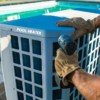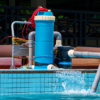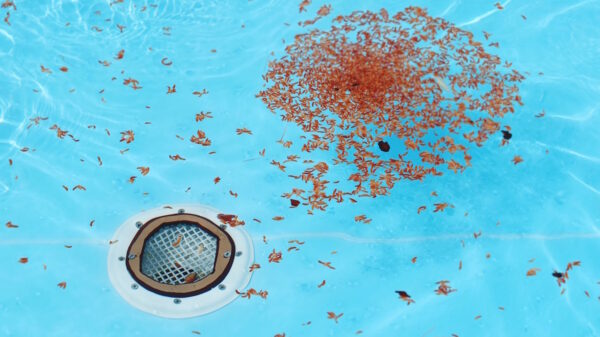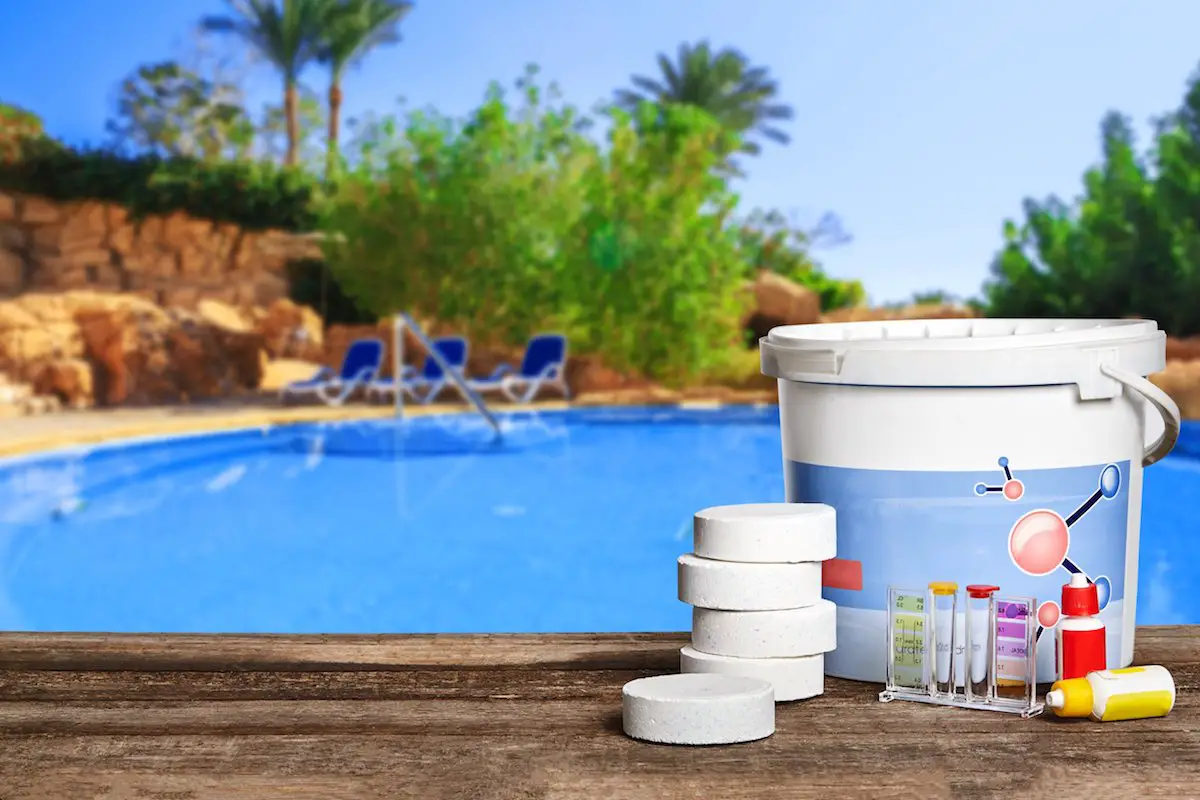Energy-Efficient Pool Pumps
Regulatory Changes and Standards
The Department of Energy (DOE) has implemented new regulations that significantly raise the bar on energy conservation and efficiency standards for pool pump motors. Effective starting September 2025, these rules mandate that manufacturers meet these elevated requirements in their products.
Manufacturers are currently facing challenges due to these rigorous standards. The average pool pump motor may become more expensive as a result. Consider a comparison pointed out by Flurida, a leading pool company, where an efficient model might cost about $1,000 under the new regulations, compared to $499 for older, less efficient models. This price increase poses concerns about the economic burden for average consumers wanting to upgrade or install new pool systems.
Despite the upfront cost, potential long-term savings should be recognized. According to the DOE, the rule could save consumers up to $8 billion in operational costs over the lifetime of these upgraded motors. Specifically, health benefits valued at approximately $2 billion and climate benefits also around $2 billion can be a direct outcome of observing these new standards.
These new DOE regulations cover a range of motor sizes, specifically targeting those between 0.5 and 5 total horsepower. Interestingly, the standards more significantly influence the smaller-size motors as they are the most commonly used for residential pools found across an estimated 8.5 million homes in the United States.
Transitioning to adhering to these standards, manufacturers and consumers would benefit by exploring various forms available through Energy Star ratings. Not only do certified pumps ensure compliance, but they also offer significant energy savings. For example, using an ENERGY STAR certified pool pump could save over $300 across the equipment’s operational lifespan when compared to non-certified alternatives.
Choosing the right motor relies not only on compliance and potential savings but also on suitable matching with the pool system’s need. Consulting a supplier’s design chart could offer valuable guidance for matching pump size to both the pool’s flow characteristics and piping systems, thereby optimizing overall efficiency.

Advantages of Energy-Efficient Pumps
Energy-efficient technology in pool pumps doesn’t just align with environmental sustainability initiatives; it significantly shifts the cost-effectiveness of maintaining pools. By selecting ENERGY STAR certified pool pumps, users can engage with a direct form of savings that embraces both reduced operational costs and enhanced efficacy in energy use. These pumps utilize advanced technology, including variable speed settings that adjust the energy used based on the specific requirements of the pool at different times, such as during active cleaning cycles or quiet overnight filtering.
The specificity of energy consumption reduction with ENERGY STAR certified pumps is tangible. Statistics indicate that such pumps can save users up to 65% in energy costs compared to traditional single-speed pumps. This figure translates directly into monetary savings, potentially accumulating up to $450 annually on electricity bills. This significant saving is achieved by embracing multi-speed and variable speed technologies that optimize energy expenditure.
Operational costs likewise decrease with these efficient models. They are specifically engineered to require less regular maintenance than their less advanced counterparts. Lower wear and tear due to controlled speeds means less frequent replacements of components and fewer repair bills. Furthermore, the operational longevity of an ENERGY STAR certified pump typically surpasses that of conventional models, sometimes by several years depending on usage intensity and maintenance adherence.
The environmental benefits are equally noteworthy. Reduced energy consumption directly leads to less demand from power plants, thereby contributing to lower greenhouse gas emissions and a smaller overall carbon footprint. For the eco-conscious pool owner, this can be a pivotal factor in the decision-making process. Moreover, variable-speed technology often operates at a low sound level, reducing noise pollution—an additional, albeit indirect, environmental benefit.
Adding to the portfolio of benefits, transitioning to an energy-efficient pool pump can often be incentivized through local or federal tax breaks and rebates, depending on one’s jurisdiction. These financial incentives can further offset the initial investment costs, easing the transition towards greater efficiency and supporting a consumer’s journey towards sustainability.
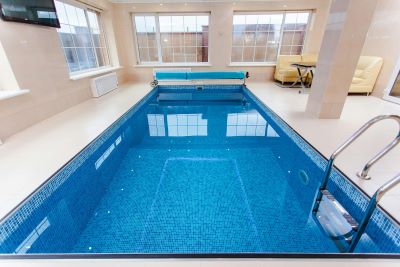
Choosing the Right Pump
Selecting the right pool pump is less about preference and more about the careful matching of system capabilities to the demands of your pool. When gearing up for your next purchase with energy efficiency front and center, there are a few criteria specifically tailored to optimize both performance and energy use.
Start by considering the size of your pool. The capacity of your pool plays a pivotal role in defining the horsepower (HP) needed. Generally, larger pools require pumps with more horsepower to efficiently circulate water. Yet, it’s crucial to avoid the common pitfall of over-pumping. An oversized pump not only hikes up your energy bill but also subjects your pool’s infrastructure to unnecessary strain resulting in potential damage to piping and filtration systems. On the flipside, a pump that’s too small for your pool won’t suffice in maintaining clean and clear water, undermining its purpose altogether.
With this understanding, usage patterns stand out as a second decision layer. Often overlooked are the varied tasks a pool pump undertakes—from filtration to heating and running additional pool features like waterfalls or spa jets. Here, variable speed pool pumps gain spotlight as a surefire enhancement to energy efficiency. Unlike single-speed pumps that operate at an unyielding pace regardless of necessity, variable-speed models tailor their output to specific tasks like running heating systems or executing backwash cycles with profound fluidity. When less power is sufficient, these pumps adjust accordingly, conserving energy and reducing operational costs.
When maintenance is on your checklist, investing in quality installations steers future headaches clear. Enlisting certified professionals not only ensures that your equipment is set correctly from the start but grants peace of mind that it aligns with every local code and manufacturer guideline. This is especially important since improper installation can undercut efficiency, lead to excessive wear and tear, and ultimately, diminish the lifecycle of your investment.
Alongside maintenance, employing careful upkeep from installation ensures optimizing efficiency consistently across your system’s lifespan. Proactive care, through regular cleaning and checks on strainer baskets and pool filters retains the pump’s peak condition. Using programmable timers can align your normal operations with precision, strategically scheduling less energy-intensive tasks like overnight filtration at reduced speeds.
In putting together your energy-efficient pool setup, you move not just toward economic flexibility but forge a commitment to sustainability. The choices you make today ripple not only into your utilities tomorrow but impact broader goals like reduced carbon emissions and thus, a lesser personal environmental footprint.
- Department of Energy. Energy Conservation Program: Energy Conservation Standards for Dedicated-Purpose Pool Pump Motors. Federal Register. 2021;86(3):1104-1169.
- Flurida Pool Company. New DOE Regulations for Pool Pump Motors. Flurida Pool Company Blog. 2021.
- ENERGY STAR. ENERGY STAR Pool Pumps. ENERGY STAR Website. 2021.


